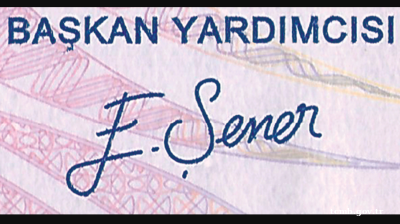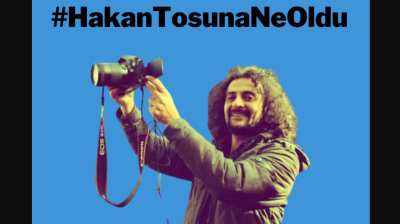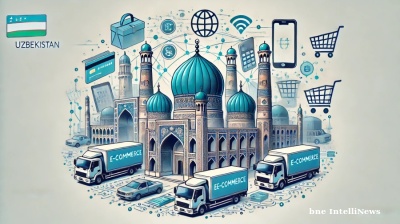The outbreak of war has caused devastation in Ukraine, major economic distortions in Russia that will doom it to long-term stagnation and sent Europe into recession as it starts to deindustrialise. But there is one group of countries that have done very well from the war: Central Asia.
Largely sitting on the fence, the five ‘Stans – Kyrgyzstan, Uzbekistan, Kazakhstan, Tajikistan and Turkmenistan – have seen their trade volumes surge and demand from Russia, now cut off from traditional suppliers in Europe, is fuelling a manufacturing and investment boom.
But it hasn’t been plain sailing. The countries of the Silk Road have been through some seismic changes in recent years, not limited to the war. Central Asia is also caught up in the growing tension between Washington and Beijing and the Taliban’s return to power in Afghanistan, which is threatening the security of the region.
But even before the war in Ukraine started, most of the ‘Stans were flourishing as three decades of economic reforms begin to pay dividends. Now the extra trade income and mushrooming demand is supercharging change, and they are ploughing the proceeds back into development.
The biggest change is the hundreds of millions of dollars of trade re-routed via one of the five ‘Stans on its way to Moscow is by passing the extreme sanctions on Russia imposed by the West. But the bulk of the trade is not sanctions busting; simply the export of goods that Russia can’t get due to self-sanctioning by Western firms that don’t want to do business with Russia any more.
Kyrgyzstan in particular has seen budget revenues double in the last year and is using the windfall to invest into massively expanding its hydropower generation capacity to turn the small mountainous republic into an energy epicentre for the rest of the region.
But beyond that, nestled between east and west, with significant supplies of raw materials, oil and gas and rare minerals, Central Asia has become strategically important the rest of the world in a way that it has not enjoyed since the times of the Great Game.
Following the Russian invasion of Ukraine, many analysts believed that the 'Stans would be forced to choose sides or face sanctions. That didn't happen. What has emerged is a delicate multivector balancing act. In March 2022, then Uzbek foreign minister Abdulaziz Kamilov became the first Central Asian official who called for an immediate ceasefire in Ukraine, affirmed the sovereignty of that country, and refused to recognise Donetsk and Luhansk as independent republics.
The 'Stans have refused to recognise Russia’s attack on Ukraine as legitimate. Face to face with Putin at St Petersburg International Economic Forum (SPIEF) in 2022, Kazakhstan's President Kassym-Jomart Tokayev refused to recognise Russia’s claim that the breakaway republics in Donbas were independent. But at the same time the 'Stans abstained in the UN votes to condemn Russia in 2022 and have rebuffed Western pressure to halt the sanctions-busting trade they have facilitated since.
Wooed by Washington, Moscow and Beijing in an increasingly fractured world, the five ‘Stans have clubbed together into the so-called C5 format to better leverage their stance in the negotiations.
“The war in Ukraine and Taliban control of Afghanistan did not isolate Central Asia; on the contrary, these events revitalised the region’s relationships with major global powers. The region’s leaders, acting as unified “C5” bloc, have visited Beijing, Berlin, Brussels, Moscow, New York and Xi’an. In turn, international leaders have made an unprecedented number of visits to the region. Russia’s Putin visited all five Central Asian states in 2022 alone, China’s Xi Jinping has toured the region twice since February 2022, Emmanuel Macron became France’s second president to visit Central Asia, and Germany’s Olaf Scholz is planning a trip to the region in September 2024,” Jennifer B. Murtazashvili wrote in a paper for Carnegie entitled Nobody’s Backyard: A Confident Central Asia.
Ironically, the East-West conflict and the pressure being applied to Central Asia to choose sides has led to an improvement in the region’s relations with both East and West precisely because its countries’ support of both sides is only partial, and even more importantly amongst themselves. The ‘Stans have been prone to bicker in internecine rivalries for most of the time since their independence.
“Central Asian states have successfully deepened ties with international partners who are often at odds with one another. The region has avoided making binary choices and instead fostered an environment where even conflicting states can coexist. They have turned crises into opportunities for positive-sum cooperation,” Murtazashvili said.
The international brouhaha has engendered an era of unprecedented co-operation amongst the normally fissiparous states. Indeed, the rivalries between the warring factions of East and West have liberated the ‘Stans from the pressures that used to be exerted by the great powers that surround them.
“Observers predicted that these events would have severe effects on Central Asia’s stability or destabilise long-standing regimes in the region. Although none of the catastrophic scenarios materialised, many still perceive Central Asia as a fragile region. What most analysis misses is the increased agency that countries in the region have over their own fates. The region is no longer a backdrop for the new Great Game, nor is it anyone’s backyard,” Murtazashvili said.
“Rather than cowering in fear and calling on larger powers to save them, Central Asian nations are exuding an independent confidence. Far from being passive or helpless players, Kazakhstan, Kyrgyzstan, Tajikistan, Turkmenistan and Uzbekistan are demonstrating that they are not pawns in a larger geopolitical game, but important actors who understand the leverage they have over larger goliaths. They are boldly and creatively tackling some of the world’s most complex geopolitical tasks.”
Business is booming
The trade with all of the countries of Central Asia and the Caucasus is booming thanks to the war. Cut off from direct imports of key inputs from Europe, much of that trade has simply been redirected via Central Asia, which has no qualms about dealing with banned goods. The trade has created a huge windfall for the 'Stans, money they are pumping into their economic development. Kazakhstan’s imports of office machinery from Europe tripled to almost $1bn from 2021 to 2023, probably partly due to a surge of new offices and factories being set up to serve Russia’s burgeoning demand.
Exports from the European Union to the 'Stans increased by €46bn in 2023, up 50% from 2021. That was equivalent to three-quarters of the drop in Europe’s exports to Russia from 2021 to2023.
Last year, agricultural products flowing from Europe into Kazakhstan doubled from 2021 to 2023, official numbers show. Machinery exports to Kazakhstan from the EU doubled from 2021 to 2022, and then rose another 23% in 2023 to reach €6.4bn. Kazakhstan’s tech industry of only 50 companies has seen exports to Russia rise from $40m in 2021 to $298m in 2023. Electronic imports from Europe also increased from €250m to €709m in the same period, The Economist reports.
Exports of goods like high-end washing machines from Europe to Kyrgyzstan and on to Russia have ballooned, some of which the Russians have been stripping for their sophisticated operating microchips that have then found their way into Russian missiles. Likewise, in Armenia's case trade has tripled, in Uzbekistan it leapt by 52% year on year and in Kazakhstan by 30% y/y.

Armenia now imports twice the chemicals, five times the IT hardware and four times the electronics from Europe in 2023 as it did in 2021. Azerbaijan has also jumped on the bandwagon, by boosting sales of gas to Europe, despite the fact that it barely has enough to meet its own domestic demand; there has been speculation that it is exporting more of its own gas to the EU, but importing more Russian gas through the backdoor to meet the domestic shortfall, something the president denies.
Tiny Kyrgyzstan has probably been the biggest winner and Uzbekistan the least. Bishkek has seen trade volumes leap by thousands of per cent, fuelling an economic boom. Budget revenues have doubled and GDP growth in 2023 was over 8%. The only European country that has seen trade volumes with Central Asia fall is Poland, which has been making a genuine effort to enforce sanctions. Western Europe’s companies seem happy to turn a blind eye to the fact that the demand for high-end Mercedes saloons or sophisticated computers suddenly spiked in what used to be the dirt-poor part of the Former Soviet Union (FSU).
And there is no sign that this trade is slowing down. Quite obviously, these countries are acting as transit routes to Russia for goods under sanction, but not only. As bne IntelliNews reported, the technology sanctions have largely failed and Russia has been able to source 98% of the machines and chips it needs from abroad in 2023, according to a report by the Kyiv School of Economics.
However, the majority of the trade is simply Central Asian countries stepping in to provide Russia with non-sanctioned goods that are no longer being sold to Russia by the EU. A study by Bloomberg found that only 7% of the goods being sent to Russia from Kazakhstan were sanctioned goods. This remake of supply channels has also spurred a boom in local investment to set up new production in what appears to be a permanent change in supplier relations, and it is working to Central Asia’s advantage.
An EBRD report looked at the example of Kyrgyzstan, “whose textile sector expanded by 42% in 2022, with textile exports accounting for 45% of total exports to Russia… and will expand above potential in 2024 at 3.6%.” All of the Caucasus countries – Armenia, Georgia and Azerbaijan – have seen similar steep rises in Russia import volumes since 2022.
The country that has benefited the least is Uzbekistan, which saw import growth of a relatively modest 13% in 2022 and 6% in 2023. Uzbekistan is double-landlocked, making it the most difficult and expensive of the 'Stans for the transit of goods from Europe to Russia.
A secondary side-effect from the war is that the influx of hundreds of thousands of Russian emigrants has also boosted local demand, pulling in more imports. Most have arrived with significant savings and have deposited millions of dollars in Georgian and Uzbek banks.
These factors have also pulled in growing imports from China as the 'Stans tool up to meet the burgeoning demand. Exports to Armenia, Georgia and Uzbekistan grew by double-digit rates in 2022-23.
“Over the last two years, the region has seen a sizeable increase in publicly and privately financed investment in transport, logistics and export-oriented manufacturing capacities. Robust growth in wages and real incomes, coupled with a surge in international arrivals and tourism, fuelled a consumption boom, further supported by technological advances in consumer lending,” the EBRD said in the report.
Intra-regional trade, investment and tourism continued to rise, assisted by much-improved regional cooperation on common challenges ranging from water and energy shortages to transport and border management bottlenecks. Inflation receded to single-digit levels in all countries in line with broader global trends, allowing central banks in most Central Asian countries to reprioritise growth and start softening their monetary policy stances, according to the EBRD.
Kyrgyzstan renaissance
Previously dependant on agriculture and gold mining, the Kyrgyz Republic has taken its war windfall and poured it into multiple hydropower projects, led by the flagship Kambarata-1 hydropower power plant (HPP) that will increase the country’s installed power capacity by half, provide the energy to boost the economic boom the small Central Asian country is already enjoying, and earn money for Kyrgyzstan through power exports to the rest of the energy-hungry region.
Economic growth is now running at 7-8% a year and the government’s tax revenue doubled in 2023 on a combination of reforms and mushrooming trade, Kyrgyzstan's Chairman of the Cabinet of Ministers Akylbek Japarov told bne IntelliNews in June.
“Average GDP amounted to 7% and accelerated to 8.8% in the first quarter of 2024,” he noted, reeling off an impressive array of macroeconomic results, including a doubling of tax revenues in the last year.
However, the nominal GDP of the country is still only $14bn, making Kyrgyzstan one of the poorest countries in Central Asia, with the region having a collective GDP of around $450bn. Nevertheless, all the macroeconomic indicators are rapidly improving, particularly inflation, which has fallen from double digits, caused by the effects of the recent polycrisis, to 4% this year.
However, the boom may have reached a peak. As reported by bne IntelliNews, the Russian economy probably reached peak at the end of the first half of this year and is now starting to cool as the military Keynesian factors that boosted economic growth are now exhausted.
|
GDP growth % y/y |
|||||
|
|
2021 |
2022 |
2023 |
2024F |
2025F |
|
Kyrgyzstan |
5.5 |
9 |
6.2 |
8.5 |
7 |
|
Kazakhstan |
4.1 |
3.2 |
5.1 |
4.5 |
5.5 |
|
Uzbekistan |
7.4 |
5.7 |
6 |
6.5 |
6 |
|
Tajikistan |
9.4 |
8 |
8.3 |
7.5 |
7 |
|
Source: EBRD |
|||||
Features

BEYOND THE BOSPORUS: Investigators feel collar of former Turkish central bank deputy governor
Regime gangs continue to hustle for gains. Some Erdoganist businessmen among the losers.

Journalist beaten to death in Istanbul as security conditions in Turkey rapidly deteriorate
Publisher, meanwhile, is shot in leg. Reporters regularly experience violence, judicial harassment and media lynching.

Agentic AI becomes South Korea’s next big tech battleground
As countries race to define their roles in the AI era, South Korea's tech giants are now embracing “agentic AI”, a next-generation form of AI that acts autonomously to complete goals, not just respond to commands.

Iran's capital Tehran showcases new "Virgin Mary" Metro station
Tehran's new Maryam metro station honours Virgin Mary with architecture blending Armenian and Iranian design elements in new push by Islamic Republic




